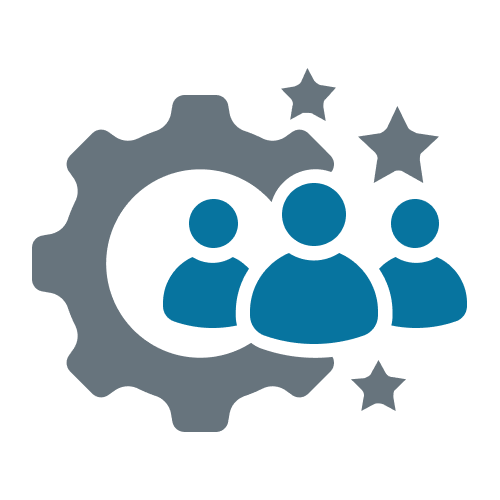Table of Contents
Thinking about creating a corporate wellness program that actually makes a difference? It’s not just about handing out gym memberships or putting a bowl of fruit in the breakroom anymore. People today are juggling a lot, dealing with stress from tight deadlines, endless video meetings, and the general grind of the modern workplace. Employees are often tired, overextended, and seeking meaningful support. That’s where a well-designed corporate wellness program comes in. Done right, it creates an environment where people feel cared for and perform at their best.
Let’s dig into how to make that happen.
Key Takeaways
- Wellness is whole-person focused. The best programs look beyond productivity and address physical, mental, emotional, and even financial well-being.
- Engagement matters. People need to want to participate. The easier and more relevant you make it, the better your results will be.
- Innovation is rising. From short breathing exercises during the workday to personalized health strategies, creative solutions are reshaping wellness.
- Measurement is essential. Tracking participation, employee satisfaction, and healthcare costs helps prove what’s working.
- Burnout and mental health deserve priority. Companies ignoring these issues risk turnover, lost productivity, and low morale.
What Corporate Wellness Really Means

Corporate wellness initiatives are organized efforts by companies to help employees live healthier, happier lives. Think of it as a company backing up its words with action. Wellness can include fitness perks, yes, but it also extends to mental health support, financial guidance, nutrition coaching, and even sleep resources.
At its core, corporate wellness is about building an environment where employees can thrive. A healthier workforce is also a more engaged and productive one, which benefits businesses as well. When people feel supported, they take fewer sick days, bring more energy to their work, and are more likely to stay loyal to their employer.
Common Workplace Health Challenges
Let’s face it: today’s workplace can be challenging. Employees often face:
- High stress levels from overwhelming workloads.
- Sedentary lifestyles from long desk hours.
- Mental health struggles like anxiety or depression.
- Poor sleep habits are fueled by late nights or blurred work-life boundaries.
Ignoring these challenges is like ignoring a leaky faucet—small at first, but costly in the long run. A company that actively addresses them builds resilience and shows it values people, not just output.
Building Blocks of a Strong Wellness Program

So, what makes a program actually effective? A few critical components stand out.
1. Fostering Whole-Person Well-Being
Wellness should never be limited to physical health. Companies also need to invest in mental and emotional health, offering mindfulness sessions, encouraging breaks, or hosting workshops on stress management. When employees know the company cares about their overall well-being, loyalty and performance rise.
2. Prioritizing Sleep
Sleep is the hidden superpower of performance. A rested employee is sharper, more creative, and less prone to errors. Companies can help by offering sleep education, promoting flexible schedules, or discouraging after-hours emails.
3. Personalized Strategies
Everyone’s health journey is different. Offering variety ensures broader impact. For example:
- Nutrition: meal planning tools, cooking demos.
- Fitness: discounted memberships, group classes, or virtual training.
- Mental health: counselling services, stress-reduction apps.
- Sleep: resources on building healthy rest habits.
Even leadership can benefit from tailored support, especially given the unique pressures executives face.
Emerging Trends in Corporate Wellness
The wellness landscape is evolving quickly. Here are three significant shifts.
Micro-Wellness Practices
Not everyone has an hour for yoga at lunch. Micro-wellness incorporates short activities into the day, such as five-minute stretches, guided breathing breaks, or gratitude reflections. Small steps add up, and they’re accessible to even the busiest employees.
Hyper-Personalization
One-size-fits-all programs no longer suffice. With apps, wearables, and health data, companies can tailor support to individual needs—whether that’s a fitness plan, financial coaching, or caregiver resources.
Remote-Friendly Wellness
Remote work has created new challenges: isolation, digital fatigue, and blurred boundaries. Companies are responding with virtual coffee breaks, ergonomic home-office support, and digital detox resources. By meeting employees where they are, companies maintain connection and care.
Driving Employee Engagement
Here’s the challenge: even the best programs flop if no one participates. Engagement strategies make the difference.
- Positive culture matters. Leadership should model wellness behaviors, such as taking breaks, discussing mental health openly, and promoting balance.
- Make it social—group activities, such as team step challenges or healthy potlucks, foster camaraderie and accountability.
- Communicate clearly. Employees need to know what’s available and how it helps them. Regular updates, success stories, and reminders go a long way in keeping people engaged.
Flexibility is key. People are busy, so wellness options should be easy to join and adaptable to different lifestyles.
Measuring Success
How do you know if your wellness program is actually working? Data is key.
ROI and Cost Savings
Research shows that every dollar invested in employee wellness can return more than three dollars in healthcare savings. Tracking healthcare claims and absenteeism rates helps quantify this impact.
Key Performance Indicators (KPIs)
Beyond costs, companies should monitor:
- Participation rates—how many employees are involved.
- Employee feedback—what’s helpful, what isn’t.
- Health outcomes—reported stress levels, activity, or sleep improvements.
- Productivity trends—harder to measure directly, but still revealing.
Reviewing these metrics regularly ensures the program stays relevant and practical.
Addressing Burnout and Mental Health
Burnout is more than tiredness—it’s complete mental, emotional, and physical exhaustion. Surveys show over 70% of workers have experienced it. Companies can help by:
- Encouraging breaks and reasonable workloads.
- Respecting boundaries outside work hours.
- Offering stress-management tools and counseling resources.
But prevention isn’t enough. Companies also need to normalize mental health support. Training managers to recognize distress, offering employee assistance programs, and fostering open conversations all contribute to creating a psychologically safe workplace where employees feel comfortable seeking help.
The Future of Corporate Wellness
Looking ahead, wellness will continue to move beyond perks into a core part of business strategy.
- Technology will play a bigger role, with wearables, apps, and AI-powered insights making support more personalized.
- Shared purpose will matter more. When employees see how their work connects to a meaningful mission, their well-being naturally improves.
- Adaptability will be key. With shifting demographics and evolving work arrangements, the most successful programs will flex to meet diverse needs—mental, financial, physical, and emotional.
Pulling It All Together
Corporate wellness is no longer an added bonus. It’s a must-have for businesses seeking resilient and productive teams. By addressing stress, sleep, mental health, and engagement, companies create workplaces where employees can thrive.Wellness programs aren’t always easy to get right, but when they succeed, the payoff is enormous: happier employees, lower healthcare costs, and stronger performance across the board. A healthy team is a high-performing team, and investing in wellness is really an investment in the future of your business.
Thinking about improving corporate wellness in your workplace? Our wellness coaching can help—book a call today to get started.










